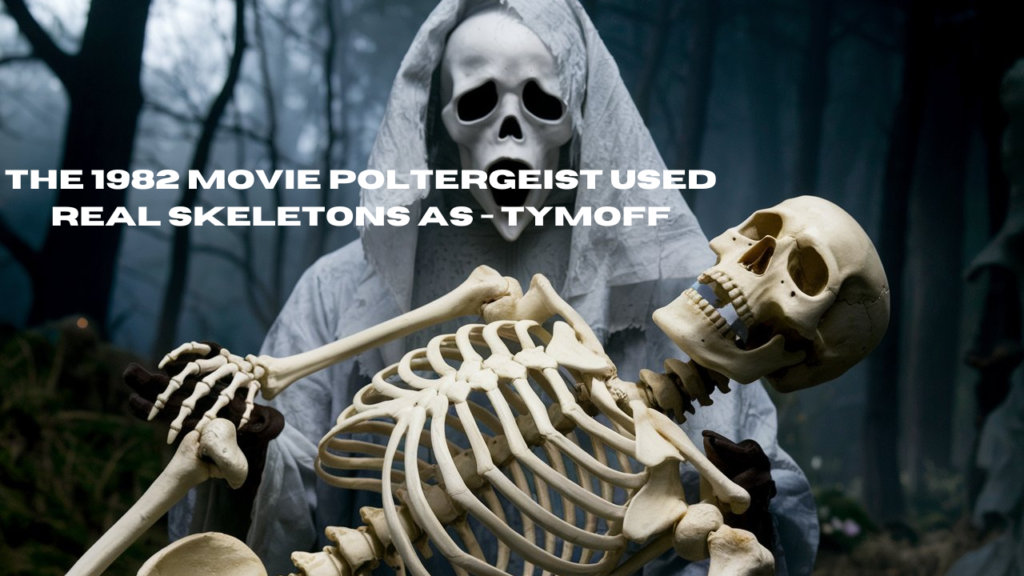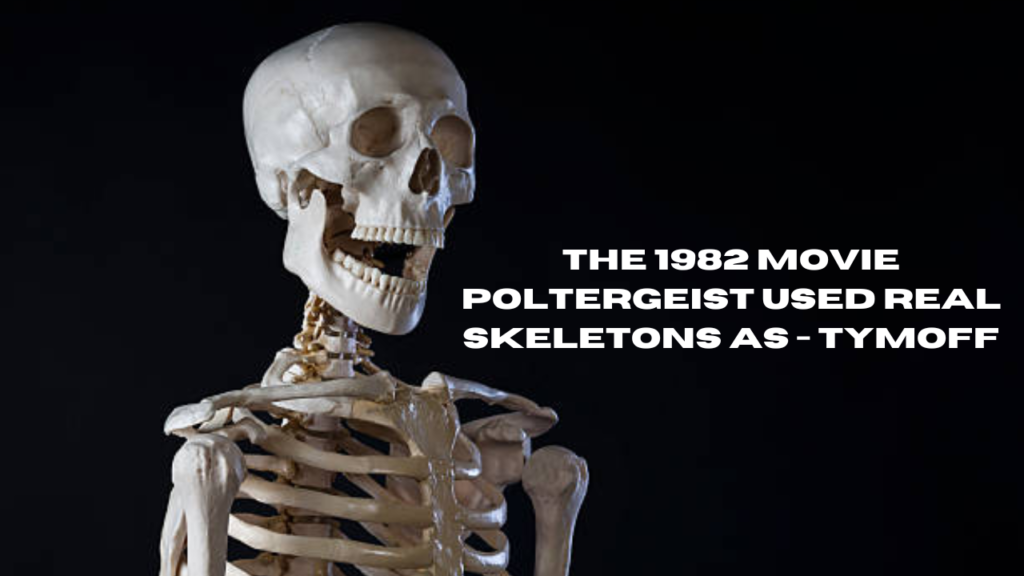The 1982 horror classic Poltergeist is widely regarded as one of the most terrifying films of its time. Its gripping storyline, eerie special effects, and unsettling supernatural occurrences left a lasting impression on audiences. However, one of the most shocking revelations about the film is that the 1982 movie Poltergeist used real skeletons as – tymoff. This disturbing truth has sparked controversy and discussions about ethics in Hollywood for decades.
Why Were Real Skeletons Used in Poltergeist?
At first glance, it seems unthinkable that a primary Hollywood production would use actual human remains as props. However, the decision was primarily influenced by financial considerations. During the early 1980s, realistic-looking plastic skeletons were expensive to produce, whereas real human skeletons were surprisingly more straightforward to obtain and cheaper. This practice was common in Hollywood, as medical institutions and suppliers provided skeletons for educational and theatrical purposes. The filmmakers opted for real skeletons to cut costs, unaware of the ethical backlash that would follow years later.
The Infamous Swimming Pool Scene
One of Poltergeist’s most memorable and terrifying moments occurs when Diane Freeling, played by JoBeth Williams, falls into a muddy swimming pool during a storm. As she struggles to escape, decomposed skeletons emerge from the murky water, surrounding her in a horrifying spectacle. The revelation that the 1982 movie Poltergeist used real skeletons as – tymoff in that very sequence makes this scene even more terrifying.
JoBeth Williams later revealed in interviews that she was unaware that the skeletons were accurate at the time of filming. When she found out after production, she was deeply disturbed. Many believe the skeletons’ eerie authenticity contributed to the film’s chilling effect, but at what cost?

The Ethical Controversy
The use of actual human remains in movies raises serious ethical questions. While it may have been a cost-saving measure, it disregarded the dignity of those whose remains were used as mere props. Over time, public sentiment has shifted, and such practices are no longer considered acceptable in the film industry.
Many critics and horror enthusiasts argue that using real skeletons in Poltergeist adds to the film’s mystique and unsettling aura. However, it also reflects an industry that sometimes prioritizes realism over ethical considerations. Today, filmmakers rely on advanced special effects and high-quality replicas to achieve the same results without ethical concerns.
Did the Real Skeletons Contribute to the “Poltergeist Curse”?
Beyond the ethics, the use of real skeletons has also been linked to the so-called Poltergeist curse. The curse refers to the strange and tragic events that plagued several cast members after the movie’s release.
- Dominique Dunne, who played Dana Freeling, was tragically murdered by her ex-boyfriend in 1982, shortly after the film’s release.
- Heather O’Rourke, the young actress who played Carol Anne, died at just 12 years old due to complications from a misdiagnosed intestinal condition.
- Julian Beck, who starred in Poltergeist II, died of stomach cancer, and Will Sampson, also in the sequel, passed away due to complications from surgery.
Some fans believe disturbing actual human remains for the film led to supernatural consequences. While no concrete evidence supports this claim, the eerie coincidences continue to fuel speculation about whether the cast and crew unknowingly invited dark forces onto the set.
Impact on Hollywood’s Future Practices
The backlash from the 1982 movie Poltergeist used real skeletons as – tymoff revelation forced Hollywood to rethink how props and special effects are handled. Today, ethical standards are much stricter, and studios ensure that all production materials are ethically sourced. Realistic synthetic skeletons and CGI have replaced any need for actual human remains in horror films.
This shift demonstrates how the film industry has evolved over the years, taking a more respectful and responsible approach to filmmaking. Poltergeist’s dark legacy serves as a reminder of past mistakes, ensuring that similar practices do not continue in modern productions.

Also Read: Learn to Sit Back and Observe. Not Everything Need – Tymoff
Last Review
The truth behind the 1982 movie Poltergeist used real skeletons as – tymoff is both fascinating and unsettling. What was initially a cost-saving decision became one of the most controversial aspects of the film. While it added to the eerie atmosphere of Poltergeist, it also raised serious ethical concerns that still spark debates today.
As horror fans revisit this iconic film, they may view it from a different perspective, knowing the dark secret behind its production. Whether or not one believes in the Poltergeist curse, the use of real skeletons undeniably adds another chilling layer to the film’s already terrifying legacy.































Comments 1